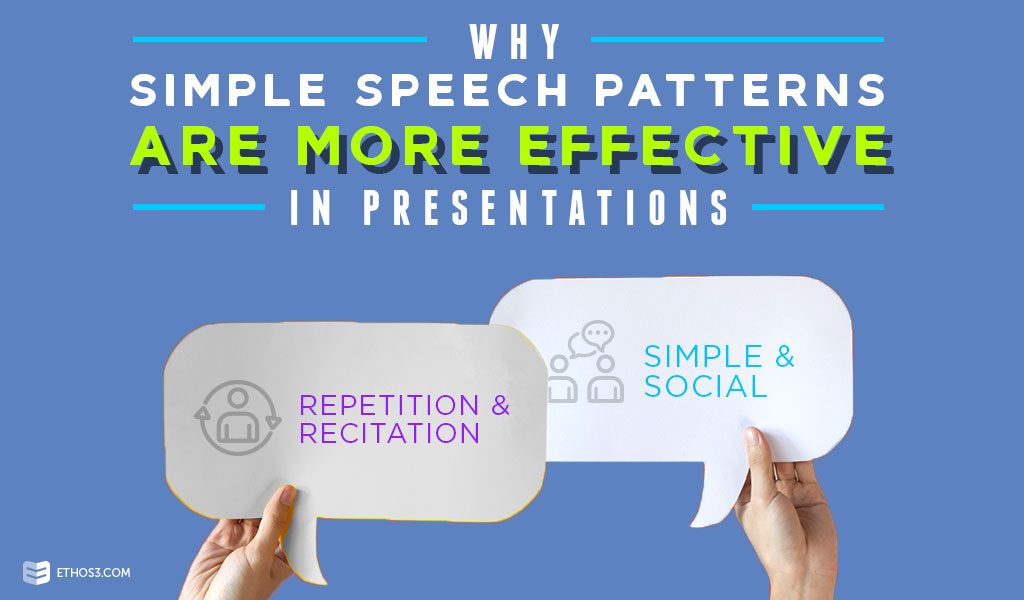Speeches and memory go hand in hand. The best way to build up impact for your audience to make your speech unforgettable. Stage presence, vocal volume, body language and audience engagement all help create memorable moments during speeches. But content is king. The more your message can connect with a wider audience, the more they will remember it. The key is to keep it simple. Here are our reasons why simple speech patterns are more effective in presentations.
Why Simple Speech Patterns Are More Effective in Presentations

One person who is making a lot of speeches right now is President Donald Trump. The president has a very particular style of speech that makes his messages easy to remember. NPR broke down President Trump’s speech patterns and their effectiveness. Here are the lessons public speakers can learn from the president.
Repetition and Recitation
If you haven’t noticed, President Trump repeats himself a lot. With just a few minutes, he says the same message over and over. With all content aside, the messages President Trump says are easy to remember and repeat. “The combination of basic language and reiteration makes it easier for listeners to remember and recite his sound bites than those of the professorial Mr. Obama, who spoke in logically progressing paragraphs.” That’s writer Teddy Waynes describing the two qualities in Trump’s speech patterns. The repetitions lead to news programs and audiences repeating the message.
Repetition works effectively in presentations. The Ethos3 philosophy is tell your audience what you are going to say, say it, then tell them what you just said. Repetition doesn’t have to be repetitive. Add emphasis, pauses, visual cues and hand gestures to make your main point become memorable.
Simple and Social
President Trump’s speech patterns include simple and conversational words. His vocabulary doesn’t include complex words. Instead he speaks in a style that is easily heard and understood by everyone. The president is also a bit spontaneous and reacts to the people in his crowds or the interview he is speaking to. Linguistics professor Joanne Scheibman says, “In spontaneous spoken interactions, we typically have the benefit of greater shared physical and cultural context than in written discourse, so we don’t have to say everything we mean.” She continues, “we can say this guy or that thing or we or they without specifying exactly what or who we’re referring to because we assume our conversational partners have the background information they need to infer what we mean.”
The next time you give a presentation, use a speech pattern that is simple and social. Simple words will be easier for your audience to remember. Interact with your audience too. React to their responses and generate conversation after your presentation is over.
Simple speech patterns have four elements that go hand in hand. Repeating yourself will lead to recitation of your message. Speaking with simple words will make your message easier to share socially. For more presentation tips and tricks, check out these posts from the Ethos3 blog:
Simplify Your Language To Sound Smarter. Here’s Why.